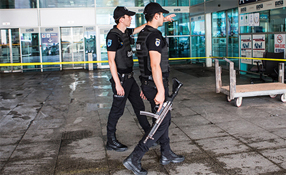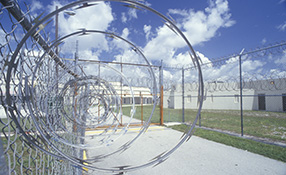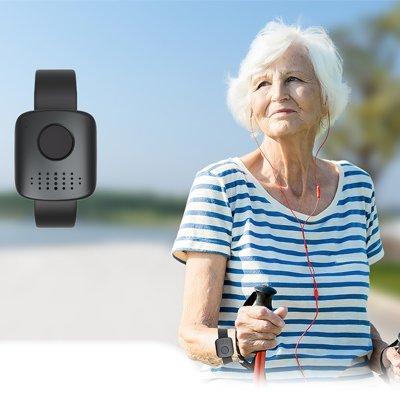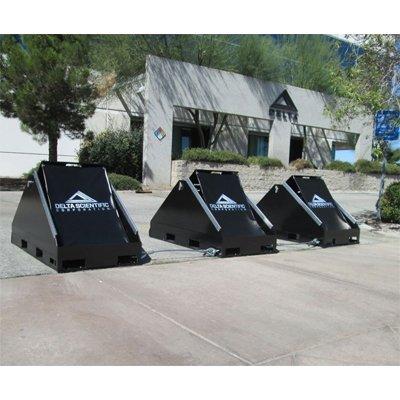 |
A US Department of Homeland Security investigation showed that undercover agents defeated airport screening in 95 percent of cases by smuggling mock explosives and weapons past checkpoints. With admirable transparency, U.S. Office of Inspector General (OIG) has described how so-called “Red Teams” posed as regular passengers and exposed inadequate measures at some of the busiest airports across the United States. The revelations came a few days before Body Search 2015, a conference in London addressing body concealment methods, threat resolution technology and the use of the human body as a weapon.
Body Search 2015
The conference delegates covered a spectrum of senior airport security managers, product manufacturers, consultants, security trainers, canine experts and academics specializing in radiology, psychology, chemistry and body-cavity IEDs. The equipment developers joined in a moment of ironic reflection when considering the alarming results reported recently from Washington, noting that their units are expected to achieve a 95 percent hit rate not failure rate and these demands do not seem to be matched by the performance levels of airport staff.
A predominant theme of the conference was the need to respect the dignity of airport travellers while maximizing their safety. No reporter, observing the timetable of the conference and the urgency of the messages being conveyed, could fail to appreciate the gravity of the threat from devices implanted within the body rather than merely carried on it. While airport security continues with its mission to detect terrorists such as “shoe bomber” Richard Reid and “underwear bomber Farouk Abdulmutallab, everybody leaving the conference would have appreciated a more pressing challenge: How can they frustrate criminals seeking to either implant bombs into their bodies or conceal the components for a bomb in bodily cavities and then assemble them “airside” or within the plane?
Calculating “Risk Score”
 |
| An air traveler with criminal intentions should never be able to second-guess what kind of algorithms are likely to assess them |
An impressive speaker in terms of range of reference and pragmatism was Adrienne Gibbs of the International Air Transport Association (IATA). Gibbs gave detailed updates on progress being made with explosive trace detection on luggage, and discussed the security implications of online check-in and even “online” boarding.
Her analysis was particularly revealing and subtle. There is a delicate balance, she said, between educating passengers in terms of what to expect at security and retaining an element of unpredictability so that jihadists and other terrorists can never perfect their preparations. As an industry reporter specializing in other areas such as CCTV and access control, I was given an instructive overview of how conscientious airport security screeners should create a “risk score” by balancing a passenger’s behavioral traits with factors such as other airports used on a multi-point long-haul journey.
Interested in airport screening practice from early adulthood, and with previous experience at the Australian Office of Transport Security, Gibbs described how as a young air traveler around Australia her (legitimate well-motivated) curiosity prompted her to learn how she could alter her gait so as to not set off metal detectors, which of her belts would or would not activate an alarm, and which of her sets of high-heel shoes she could keep on.
Enhancing Access Control With RFID And Biometrics
Moving to present-day practice, she continued by describing how flexible methods should allow airport checkers to decide which parts of the body should be screened and with what levels of sensitivity. An air traveler with criminal intentions should never be able to second-guess what kind of algorithms are likely to assess them and in what manner. Gibbs continued by arguing that the industry should be doing more with RFID trays to track an individual’s bag throughout the system while also building on recent breakthroughs in biometrics. Again, as an outsider, this was an “elephant in the room” moment when I considered the infinitesimal likelihood that staff at the walk-through metal-detector arch would connect my demographic profile with the contents of my backpack on the adjacent x-ray baggage scanner.
There is a delicate balance between educating passengers in terms of what to expect at security and retaining an element of unpredictability so that jihadists and other terrorists can never perfect their preparations |
Defying Terrorism Through Unified Action
The likelihood is that airport security will move quickly on this kind of interconnectedness, which is no more than an easily implemented aspect of ”big data.” I was consistently impressed by the self-awareness and breadth of vision of these leading researchers, analysts and manufacturers working in a specialized field within the overall security field. They justifiably bemoaned the fact that inflexibility from regulators means significant innovations are often delayed for five years before being used in the field. (There is an obvious parallel with the pharmaceutical industry.)
Several speakers hinted that much may be learnt from the ability of sports stadia administrators to channel large numbers of people through entry points quickly. Moderator Steve Wolff used a telling phrase when stressing that the sector must free itself from inward-looking attitudes that can involve “islands of technology.” Airport security managers face some of the most pressing challenges, but if, as with the security community as a whole, they succeed in unifying formerly disparate equipment and ways of working, then the terrorist threat (which will never abate) will at least face sterner obstacles.
From facial recognition to LiDAR, explore the innovations redefining gaming surveillance















































